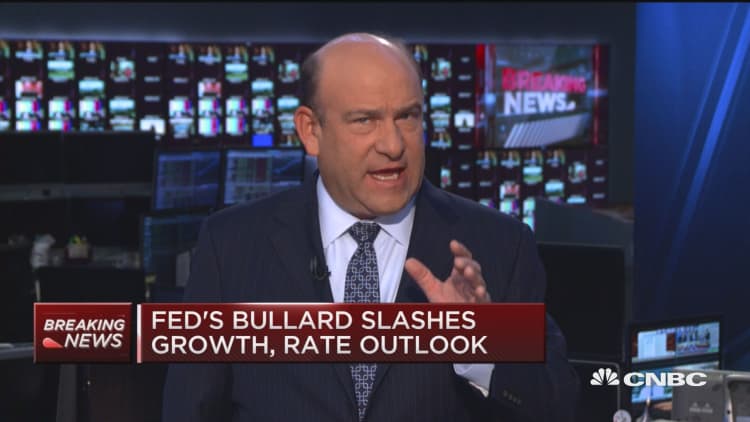
St. Louis Fed President Jim Bullard, in a significant shift in his outlook for the economy, now says low growth and a very low fed funds rate of just 63 basis points will likely remain in place through 2018.
Bullard, reversing earlier forecasts that looked for growth to pick up and rates to rise, now says 2 percent growth is the most likely forecast and that rates will remain low. Bullard also sees unemployment at 4.7 percent and trimmed-mean PCE inflation of 2 percent during this window.
As a result, he says the fed funds rates should remain at 63 basis points during the remainder of his forecast. The current target rate is 25 to 50 basis points.
"An older narrative that the bank has been using since the financial crisis ended has now likely outlived its usefulness, and so it is being replaced by a new narrative. The hallmark of the new narrative is to think of medium- and longer-term macroeconomic outcomes in terms of regimes," said Bullard, one of the Fed's most aggressive rate hawks.
The Fed's so-called dot plot showed that one official saw just one interest rate increase through 2018, but it was unclear until now that it was Bullard.
In a conference call with reporters following the release of the position paper, Bullard said the mismatch between Fed and investor expectations for the fed funds rate is eroding the central bank's credibility and causing distortions in the market.
The Fed's forecast for the pace of rate increases has consistently been above market expectations. Bullard said the Fed should lift rates once by the end of the year, but added that he prefers to wait until policymakers can hike on good news.
The Fed raised rates from near zero in December, but has kept Wall Street waiting for a second move. When it raised the rate in December, it indicated that it expected four rate hikes this year. It later revised that projection to two increases for 2016.
At present, the long-run outcome for the U.S. economy remains uncertain, Bullard said.



